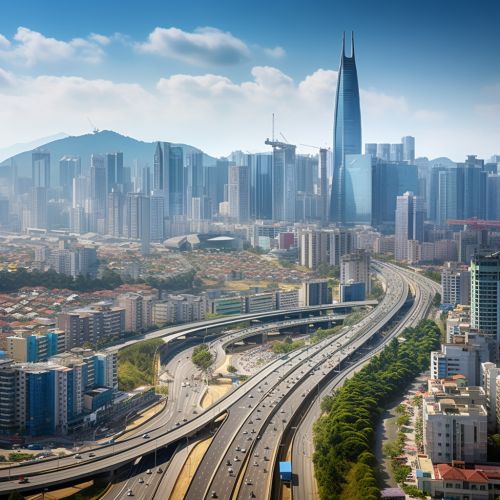Economy of Korea
Overview
The Economy of Korea is a highly developed mixed economy dominated by family-owned conglomerates called chaebols. It is the 4th largest in Asia and the 12th largest in the world. South Korea is known for its spectacular rise from one of the poorest countries in the world to a developed, high-income country in just a few generations. This economic miracle, commonly known as the Miracle on the Han River, has been driven by constant innovation and industrialization.
History
The history of the Korean economy can be divided into three periods: the pre-modern era, the modern era, and the contemporary era. The pre-modern era was characterized by subsistence farming and a predominantly agrarian society. The modern era, which began with the Japanese occupation in 1910, saw the introduction of modern industrial methods and a shift towards a more urbanized society. The contemporary era, which began with the end of the Korean War in 1953, has been marked by rapid industrialization and economic growth.
Economic Sectors
The Korean economy is characterized by a high degree of diversification, with significant contributions from various sectors. The primary sector, which includes agriculture, fishing, and mining, contributes about 2.5% to the GDP. The secondary sector, which includes manufacturing and construction, contributes about 39.5% to the GDP. The tertiary sector, which includes services and commerce, contributes about 58% to the GDP.
Agriculture
Agriculture in Korea is characterized by small-scale farming and a high degree of mechanization. The main crops are rice, barley, and vegetables. Livestock farming, particularly of pigs and cattle, is also significant. Despite the small size of farms, productivity is high due to the intensive use of modern farming techniques and equipment.
Industry
The industrial sector is the backbone of the Korean economy. It is dominated by heavy industries such as shipbuilding, automobile manufacturing, and electronics. South Korea is home to some of the world's largest shipbuilders and automobile manufacturers, and is a global leader in the production of semiconductors and electronics.
Services
The service sector is the largest sector of the Korean economy, contributing more than half of the GDP. It includes a wide range of activities such as retail, finance, real estate, education, and healthcare. The sector has been growing rapidly in recent years, driven by increasing domestic consumption and the growth of the tourism industry.
Trade
South Korea is a major player in international trade, with exports accounting for about half of the GDP. The country's main export products are electronics, automobiles, ships, petrochemicals, and machinery. The main import products are oil, machinery, and raw materials. The main trading partners are China, the United States, and Japan.
Economic Policies
The Korean government has played a key role in the development of the economy through various economic policies. These include the Five-Year Plans, which were instrumental in the rapid industrialization of the country, and the chaebol system, which has been a major driver of economic growth. The government has also implemented various reforms to liberalize the economy and promote competition.
Challenges
Despite its impressive growth, the Korean economy faces several challenges. These include an aging population, a high level of household debt, and increasing competition from other Asian economies. The government is taking measures to address these challenges, such as promoting innovation and entrepreneurship, improving the social safety net, and pursuing economic diversification.
Future Prospects
The future prospects of the Korean economy are generally positive. The country is well-positioned to benefit from the growth of the global digital economy, thanks to its advanced technology and highly skilled workforce. The government's commitment to innovation and structural reforms is also expected to support sustained economic growth.
See Also


